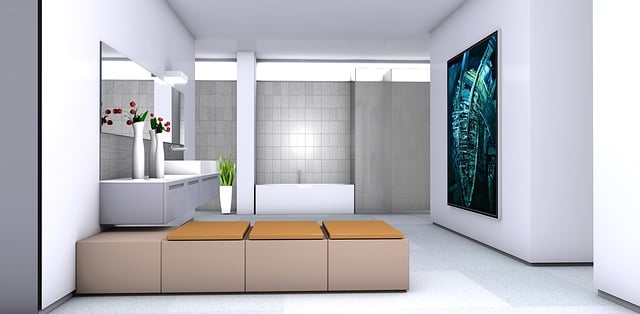Structural CAD rendering is a cutting-edge engineering visualization technique that transforms complex blueprints into interactive 3D models, providing stakeholders with detailed project insights. This process uses Computer-Aided Design (CAD) software to accurately represent dimensions and specifications, enhancing decision-making and collaboration during design and construction phases. Advanced technology has enabled engineers to create high-precision 3D models, moving away from traditional 2D drawings. The result is improved visual communication, analysis, and simulation, leading to optimized structural integrity and performance in critical industries. Best practices in structural CAD rendering include meticulous attention to detail and leveraging advanced software, with future trends focusing on realistic VR/AR visualizations and sustainable design representation.
“Unleash the power of visualization with high-precision structural CAD rendering—a game-changer in engineering. This comprehensive guide explores the art and science of creating detailed 3D models for accurate structural analysis and communication. From its foundational concepts to cutting-edge technologies, we delve into how advanced rendering techniques are revolutionizing the engineering landscape. Discover the benefits, applications, and best practices that drive success in this dynamic field, shaping the future of structural design.”
Understanding Structural CAD Rendering: A Foundation for Engineering Visualization
Structural CAD rendering is a powerful tool in engineering visualization, offering an accurate and detailed digital representation of structures. It involves creating 3D models using Computer-Aided Design (CAD) software, allowing engineers to precisely visualize complex geometric shapes and components. This process goes beyond simple drawing; it ensures every dimension, angle, and specification aligns with the intended design, making it invaluable for conceptualization, communication, and analysis.
By translating engineering blueprints into interactive 3D models, structural CAD rendering enables stakeholders to gain a deeper understanding of a project’s intricacies. This visual approach facilitates better decision-making, as potential issues can be identified and resolved early in the development phase. Moreover, it promotes effective collaboration among team members, ensuring everyone works with the same comprehensive and precise foundation for design and construction.
The Evolution of High-Precision Technology in Structural Design
The evolution of high-precision technology has revolutionized structural design, paving the way for unparalleled accuracy in engineering visualization. Traditional methods relied on rough approximations and 2D drawings, limiting the clarity and detail engineers could convey. However, with the advent of advanced Structural CAD rendering, designers now have a powerful tool to create precise 3D models that capture every nuanced detail of a structure. This technology has not only enhanced visual communication but also enabled more efficient analysis and simulation, leading to improved structural integrity and performance.
High-precision structural CAD rendering allows engineers to transform complex concepts into tangible digital representations. By employing sophisticated software and hardware, intricate geometric shapes, material properties, and load conditions can be accurately depicted, providing a clearer understanding of the final product. This level of detail is particularly crucial in industries where even the slightest deviation can have significant implications, such as aerospace, civil engineering, and high-end manufacturing.
Benefits and Applications: Enhancing Accuracy and Communication
High-precision structural CAD rendering transforms engineering visualization by significantly enhancing accuracy and communication. This advanced technique goes beyond basic 3D models, offering detailed representations that capture intricate design elements, materials, and dimensions. By leveraging cutting-edge software and hardware, engineers can create photorealistic images and animations that precisely mirror their designs, fostering better understanding among stakeholders.
The benefits are profound, particularly in complex projects where clear communication is crucial. High-precision structural CAD rendering enables clients, manufacturers, and other team members to visualize critical aspects of a design, such as assembly processes, stress points, and fitment, with unparalleled clarity. This leads to reduced misinterpretations, fewer revisions, and faster project timelines, ultimately streamlining the entire engineering lifecycle.
Best Practices and Future Trends in Structural CAD Rendering
In the realm of structural CAD rendering, best practices continuously evolve with advancements in technology and industry standards. High-precision visualization demands a blend of technical expertise and artistic skill to accurately represent complex engineering designs. One key practice is maintaining meticulous attention to detail, ensuring every dimension and feature is accurately translated into the digital domain. This involves utilizing advanced software tools capable of handling intricate geometry and precise material properties.
Future trends in structural CAD rendering point towards increasingly realistic and interactive visualizations. The integration of Virtual Reality (VR) and Augmented Reality (AR) technologies promises immersive experiences, allowing engineers to virtually walk through or inspect structures before construction begins. Additionally, there’s a growing emphasis on sustainable design representation, where rendering techniques highlight eco-friendly features and materials, bridging the gap between engineering excellence and environmental consciousness.
High-precision structural CAD rendering has become an indispensable tool for engineers, revolutionizing visualization and enhancing communication within the design process. By leveraging advanced technologies, engineers can now create intricate 3D models that accurately represent structures, enabling better decision-making and collaboration. Looking ahead, the future of structural CAD rendering promises even greater precision and integration with other digital tools, fostering a more efficient and innovative approach to engineering visualization.
